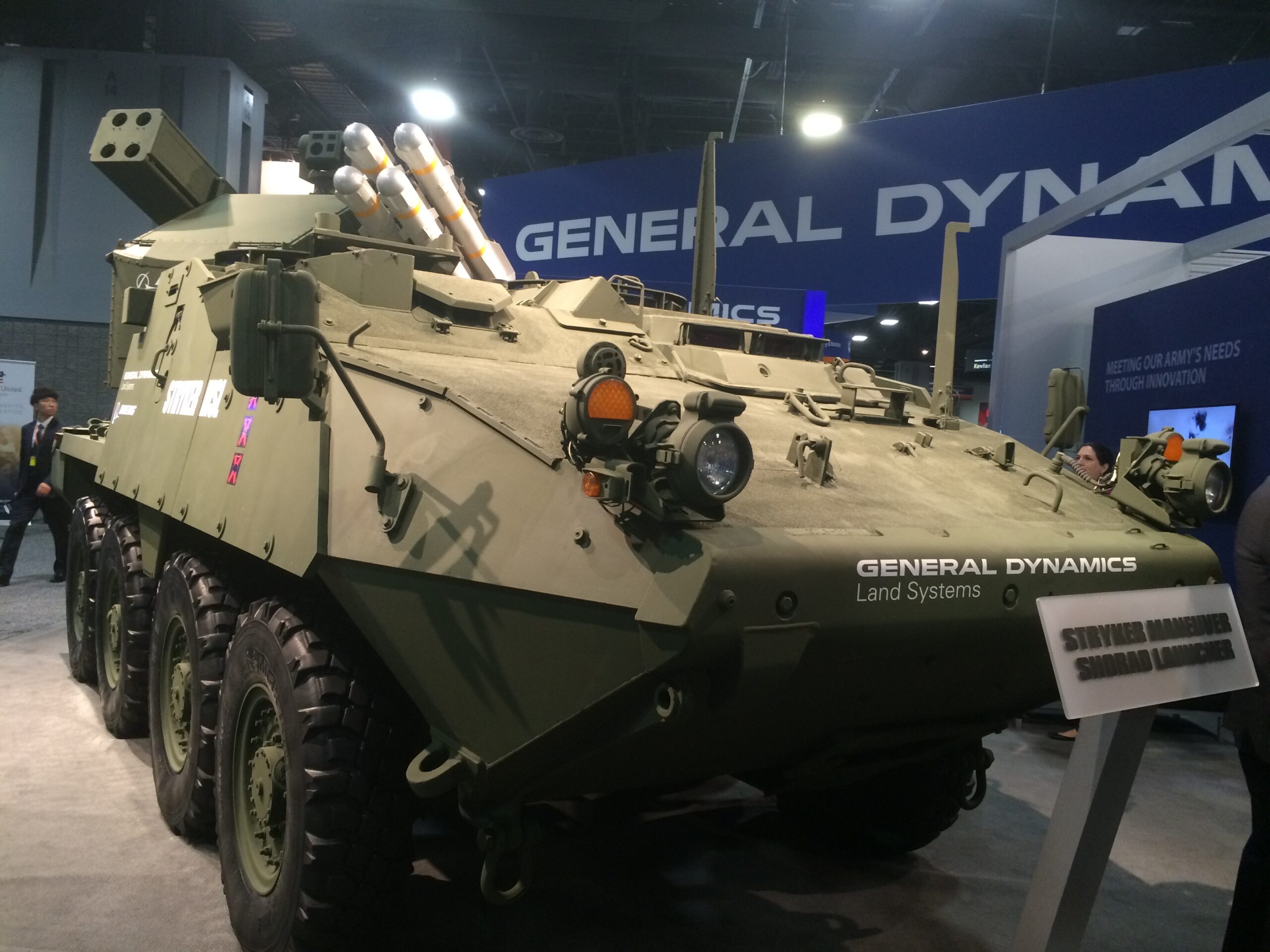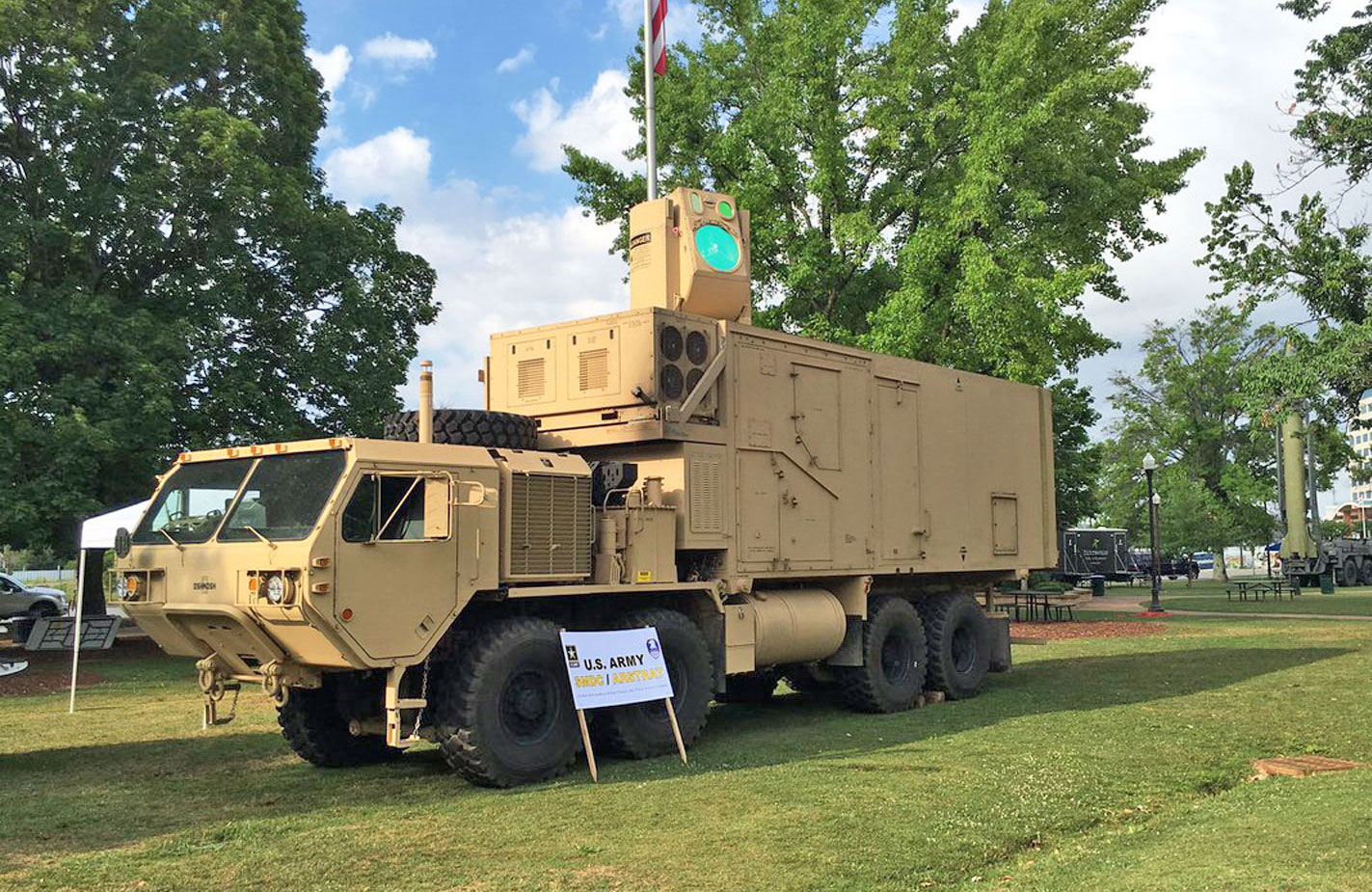U.s. Anti Aircraft Vehicles - New Stryker-based anti-aircraft vehicles are arriving in Germany as aerial threats, particularly small drones, continue to grow.
The U.S. military has begun developing its first new short-range air defense system in decades as the range of potential air threats expands, from traditional fixed-wing aircraft and helicopters to missiles, especially small drones. The service announced today that a forward unit stationed in Germany recently received the first batch of operational Mobile Short-Range Air Defense, or M-SHORAD, systems based on the Stryker 8x8 wheeled armored personnel carrier.
U.s. Anti Aircraft Vehicles

The 5th Battalion, 4th Air Defense Artillery Regiment, based at Shipton Kaserne in Ansbach, Germany, now has an M-SHORAD contingent along with existing Humvee-based short-range air defense systems. This battalion, assigned to the 10th Army Air and Missile Defense Command (AAMDC), also based in Germany, has already been actively involved in the development and testing of this new anti-aircraft machine, which is the culmination of an ongoing effort by the Army. in 2018.
Ukroboronprom And Six Nato Nations To Jointly Produce Military Equipment
Two Mobile Short Range Air Defense (M-SHORAD) systems are now assigned to the 5th Battalion, 4th Air Defense Artillery Regiment in Germany., US Army.
The 5-4th Air Defense Artillery is actually using some prototype vehicles to begin developing its operational capabilities. According to Defense News, the unit expects to receive a total of 32 M-SHORAD systems by September.
"This is truly a testament to our military's commitment to increasing air and missile defense capabilities and joint force capabilities, especially here in Europe," Brigadier General Gregory Brady, 10th AAMDC commander, said in a statement. "The 10th AAMDC is proud to be a part of this team effort and remains engaged, positioned and ready to assure, deter and defend maneuver forces in an increasingly complex integrated air and missile defense environment, shoulder to shoulder with our NATO allies."
In 2018 the Army launched what was initially called the Initial Maneuverable Short-Range Air Defense (IM-SHORAD) program and later staged a firefight involving several contenders. The winning bid was from Leonardo DRS, a subsidiary of US-based Italian defense contractor Leonardo, based on the Stryker vehicle.
Kim's Air Force Can't Fly Against South Korea's New Anti Aircraft Gun
In 2020 In October, General Dynamics Land Systems, which develops the Stryker series, received a contract worth approx. $1.2 billion to integrate Leonardo's DRS M-SHORAD system into an unspecified number of 8x8 wheeled armored vehicles. The initial allocation of $230 million will be used to deliver 28 systems, which, along with four prototype vehicles, will make up the entire fleet that the 5-4th Air Defense Artillery is slated to receive this year.
The M-SHORAD system primarily consists of a new turret, as well as associated fire control, power generation and other components mounted on the Stryker. The turret houses a four-wheeled FIM-92 Stinger heat-seeking surface-to-air missile launcher similar to those found on the Avenger system, which you can read more about here, on one side. On the other side are two launch rails for millimeter-wave radar-guided AGM-114L Longbow Hellfire missiles. The AGM-114L is in US military service today primarily as an air-to-surface and surface-to-surface weapon, but it has a secondary surface-to-air capability against slower-flying threats.
The turret also mounts a 30 mm M230 automatic cannon and a 7.62 mm M240 machine gun that can be used against air targets or ground threats. Finally, it has a rotating sensor system with electro-optical and infrared cameras for target acquisition and general situational awareness. In addition, four small fixed-position RADA active electronically scanned array (AESA) radars are located at the rear of the vehicle to aid in target detection and tracking.

When the military selected the Leonardo DRS as the winner of the IM-SHORAD competition, there were reports that the proposal also called for a soft-kill system, such as an electronic warfare transmitter. RADA radars
Self Propelled Anti Tank Black And White Stock Photos & Images
Primarily a component of various soft-kill anti-drone systems, including the US. Marine Corps Light Marine Air Defense Integrated System (LMADIS) mounted on the Polaris MRZR all-terrain vehicle.
Regardless of whether the soft-kill feature is integrated or not, the M-SHORAD system already provides a significant increase in capability compared to the Avenger, which does not have its own radar system and is armed only with Stingers and a single .50 caliber. M3P machine gun. The Stryker platform also greatly improves mobility and survivability compared to the Humvee, which carries the Avenger's systems.
"I really can't compare it to anything I've worked in my career," Army Sergeant Andrew Veres, a member of the 5-4th Air Defense Artillery, said in an official interview. "Everything about these systems is improved - survivability, mobility, reliability, off-road capability - it gives us the ability to stay in the fight longer."
The military is also already looking to complement the M-SHORAD system with a Stryker-mounted laser-directed energy weapon for additional defense, particularly against small drones, as well as incoming missiles, artillery shells, and rocket and mortar shells. Defenses against these latter threats are commonly referred to as Counter-Rockets, Artillery and Mortars, or C-RAM. The service also wants to combine its short- and long-range air and missile defenses with a comprehensive network that also includes a variety of sensors and uses artificial intelligence and machine learning. You can learn more about that effort, known as the Integrated Battle Control System (IBCS), which promises to revolutionize how the service defends itself against a variety of air threats.
Bronco Cb35148 1/35 Us M19a1 40mm Gun Motor Carriage \
Stryker wheeled armored vehicle with experimental laser weapon, painted brown, among other additional systems., US Army
In addition to the exact specifications of M-SHORAD and other future plans for the Army's air and missile defense, these new vehicles arriving in Germany directly reflect the Army's commitment to rebuilding its SHORAD capabilities, which were allowed to languish at the end of the Cold War when it seemed that enemy air and missile attacks the threat has largely disappeared. It turned out to be a very short-term solution, which
Explored in this previous detailed feature. The prospect of another major confrontation with Russia after the seizure of Ukraine's Crimea region in 2014. has led to a resurgence of interest in a range of conventional conventional capabilities, with a particular focus on future conflicts with potential near-field adversaries. China has since classified Russia as a so-called "pace threat" in this regard.

In fact, the 5-4th Air Defense Artillery, in its current form, was officially activated in 2018. in October, was the first short-range air defense battalion to be deployed to an active-duty Army in nearly 13 years at the time. . More than a decade ago, the service decided that the Army National Guard would become the sole operator of the Avenger system, which first entered service in 1989. M6 Linebackers, Stinger-armed SHORAD systems based on the Army's Bradley tracked combat vehicle. First used in 1998, until 2006. all were converted to standard M2 Bradley Infantry Fighting Vehicles (IFVs). The number of shoulder-fired Stingers, weapons also known as man-portable air defense systems (MANPADS), were also released. severely limited.
Army Fields First Anti Aircraft Strykers In Just 3 Years
The service also has smaller ground-based versions of the ship-mounted Phalanx Close-In Weapon System (CIWS), known as Centurions, which it developed with the US Navy. However, this is a niche, low-density asset, primarily used for C-RAM protection on fixed installations overseas, not for more general SHORAD.
At the same time, less hostile countries such as Iran and North Korea, and even non-state actors, have increasingly begun to develop more capable missile systems. This includes land-based cruise missiles, against which shorter-range air defenses can be very useful.
Various types of armed drones are also increasingly being used, including cruise munitions, also known as suicide drones. Swarm technology is also spreading, which poses additional challenges for air defenders. Even small modified commercial quad and heccopter type unmanned systems loaded with small explosive payloads now pose a very real threat that will likely only increase over time.
This reality has already led to the deployment of Army Avengers to places like Syria and Saudi Arabia. In recent years, the military has also developed and introduced new versions of the Stinger with improved proximity tubes that are better suited to these types of small threats.
The Army Upgrades Its Air Defense Capabilities With An Eye To The Future
"These small and medium-sized UAS [unmanned aerial systems] spreading across the [area of operations] pose a new and complex threat to our forces and those of our partners and allies," said US Marine Corps Gen. Frank McKenzie. US commander. Central Command (CENTCOM) told the House Armed Services Committee this week, "For the first time since the Korean War, we are operating without complete air superiority."
McKenzie, 2019 after taking command of CENTCOM has been sounding this alarm for over a year, as have others for much longer, including The War Zone.
Overall, the arrival of M-SHORAD systems in Germany is the beginning of the development of valuable additional air defense capabilities for US forces in Europe, as well as an important step forward in the development of new,

Us anti gravity aircraft, aircraft vehicles, us anti aircraft, unmanned aircraft vehicles, anti-aircraft, aircraft other vehicles & trailers, aircraft tow vehicles, us anti aircraft systems, anti aircraft, us navy anti submarine aircraft, aircraft anti collision lights, us anti submarine aircraft
0 Comments